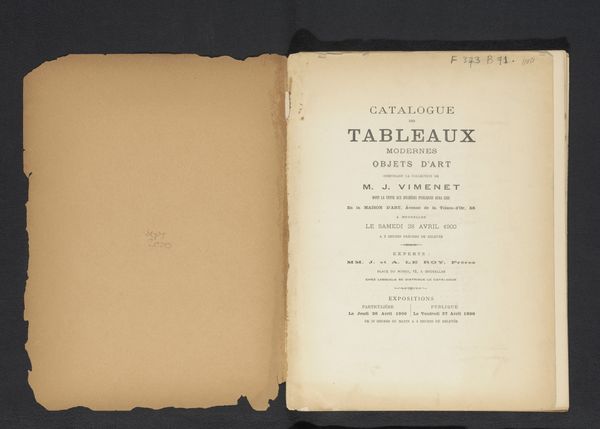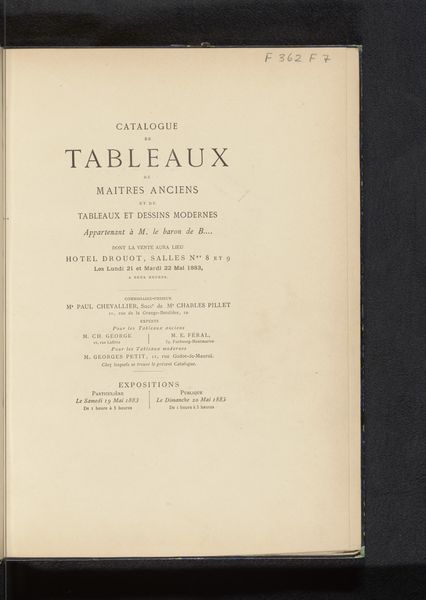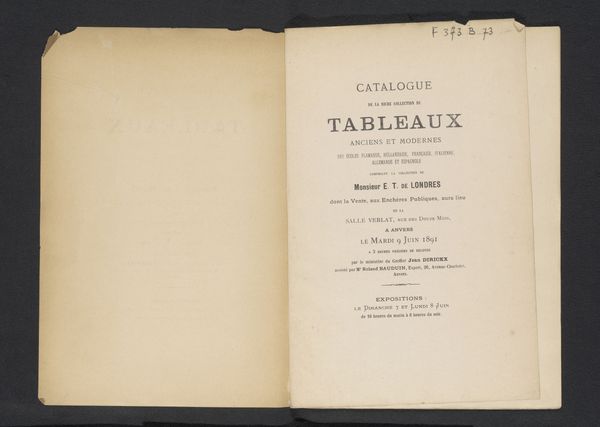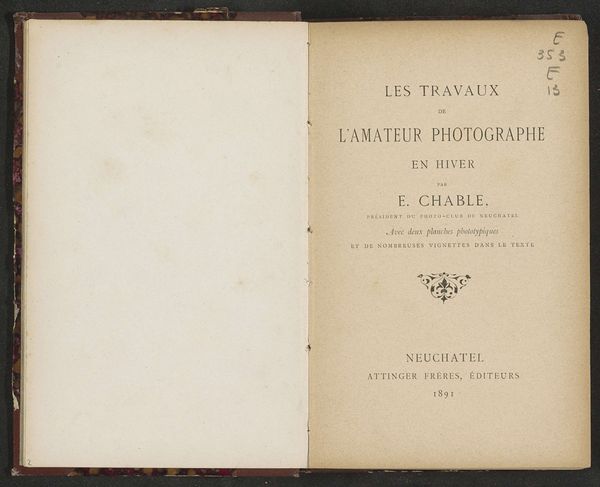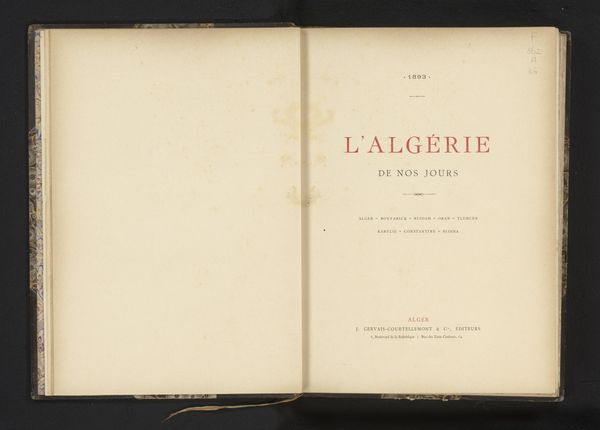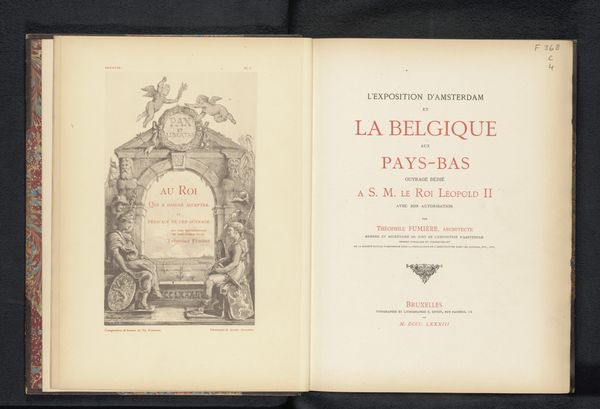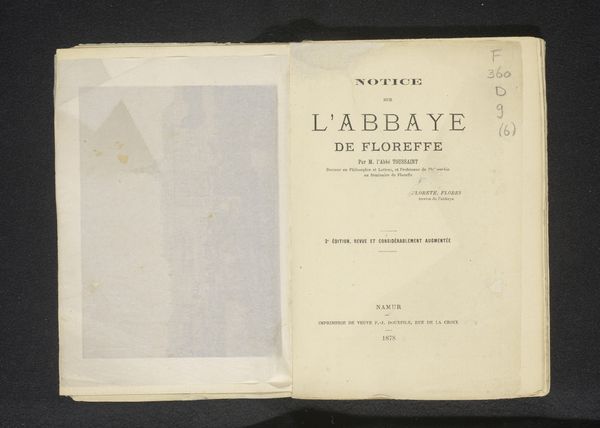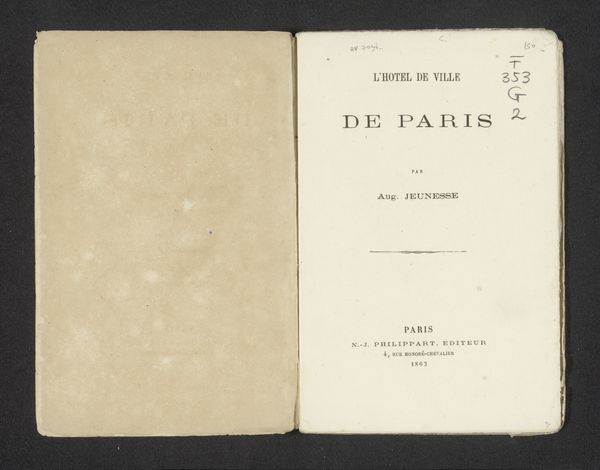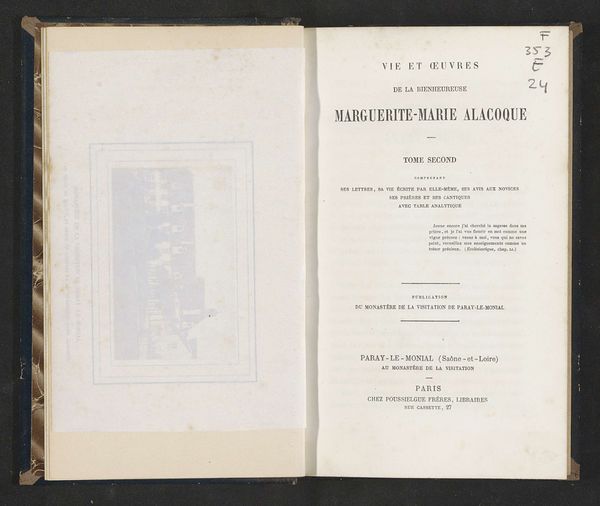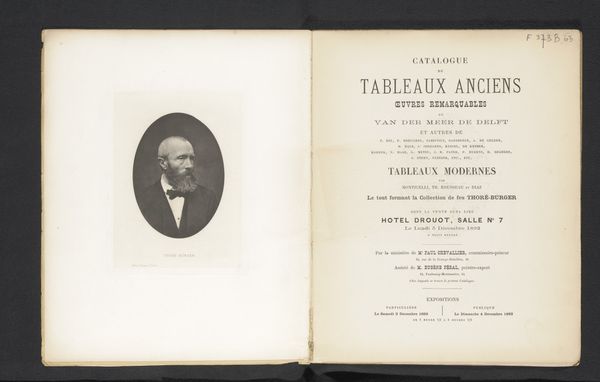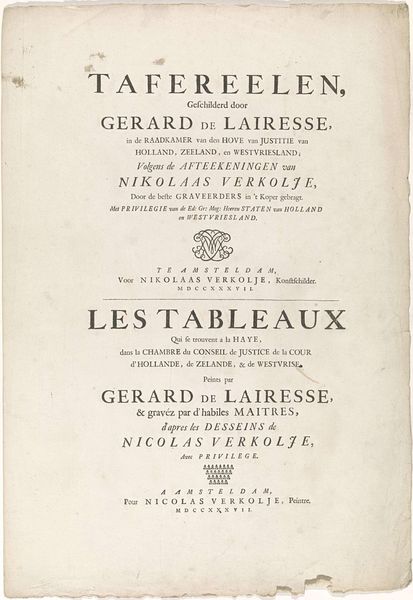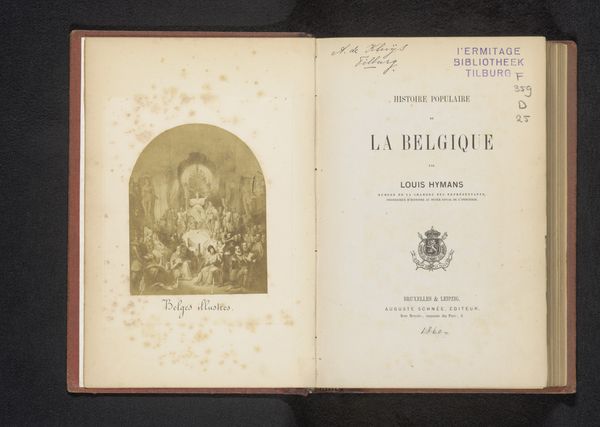
Catalogue de la riche collection de tableaux anciens et modernes des écoles flamande, hollandaise, etc. composant le cabinet de feu M. le Vicomte de Buisseret 1891
0:00
0:00
graphic-art, print, paper
#
graphic-art
#
aged paper
#
homemade paper
#
paper non-digital material
#
paperlike
# print
#
personal journal design
#
paper texture
#
paper
#
fading type
#
folded paper
#
letter paper
#
paper medium
Dimensions: height 292 mm, width 201 mm, thickness 6 mm
Copyright: Rijks Museum: Open Domain
Curator: What we have here is a catalogue page from 1891. Its full title is quite a mouthful: "Catalogue de la riche collection de tableaux anciens et modernes des écoles flamande, hollandaise, etc. composant le cabinet de feu M. le Vicomte de Buisseret," printed by Imprimerie Coosemans. Editor: Immediately, the faded texture speaks to me of bygone eras—paper holding so much forgotten information. It projects a sense of veneration for the lost stories within its pages. The typography suggests both importance and an official function. Curator: Indeed. We must understand this object within the context of its creation—the late 19th century was an era of significant social and economic stratification. A private collection like Vicomte de Buisseret’s showcased the collector’s power. Editor: I find the prominent use of the word "TABLEAUX"—paintings—visually potent. The sheer repetition of that concept must have had a strong symbolic impact on the elite audience perusing it then. Did ownership of art confer power? Curator: Absolutely. Art ownership signaled not only taste and refinement, but also access to resources. Catalogues like this reinforced those hierarchical social dynamics by showcasing what was "allowed" within high culture. Editor: And "riche collection"—the word choice creates an interesting power dynamic, reinforcing a feeling of grandeur. I wonder about the visual vocabulary inside. Each painting within it acted like a small, controlled universe that spoke volumes about identity and values. What visual stories did they intend to carry? Curator: Precisely. Considering it from today’s viewpoint, who and what did this catalogue exclude? Which artists never made it onto these pages and were therefore left out of that definition of "rich"? It is essential that we critically reassess these inherited structures and ask about their contemporary echoes. Editor: A fitting caution, with an "Ex Libris" of someone who acquired it about a century later. The layers continue accumulating…It really invites a pondering on ownership, accessibility, and the long life of visual meaning. Curator: Precisely, it's a small fragment from another time, pregnant with meaning about society. Editor: I'm left considering how objects hold layers of intent, cultural memory, and the complex, always shifting narratives around status.
Comments
No comments
Be the first to comment and join the conversation on the ultimate creative platform.
